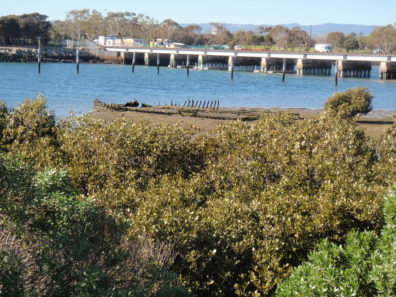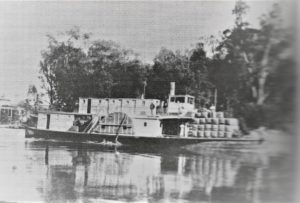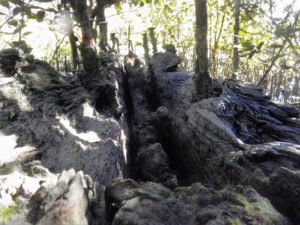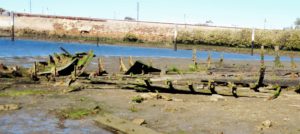A Little More About the Trafalgar and the Alert
by Steve Reynolds
Further to the details provided in Changes Over Time to Two Wreck Sites at the Jervois Basin Ships’ Graveyard, the 1877-built paddle steamer Trafalgar may have been beached in the Jervois Basin in the 1940s,
The paddle steamer Trafalgar at Echuca
This picture is taken from “Redgum & Paddlewheels – Australia’s inland river trade” by Peter J. Phillips. According to the book, the Trafalgar carried both cargo and passengers and she once produced one of the fastest journeys in river history.
The vessel was brought to Port Adelaide by Reginald Crouch in the 1940s to be converted to a ketch, but the ship’s weak iron frame prevented that, so he left it beached.
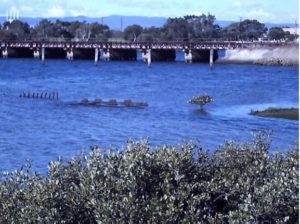 The partially submerged Trafalgar in 2011
The partially submerged Trafalgar in 2011
This picture is taken from “Redgum & Paddlewheels – Australia’s inland river trade” by Peter J. Phillips. According to the book, the Trafalgar carried both cargo and passengers and she once produced one of the fastest journeys in river history.
The 1872-built ketch Alert was broken up and beached in 1960. It had been built by J&D McKay in 1872, registered by J. Evans and J. McLeod in Port Adelaide in 1873.
There are many (lots) of photos of the Trafalgar in “Redgum & Paddlewheels – Australia’s inland river trade” by Peter J. Phillips.
The Trafalgar in 2019
Several photos of the Trafalgar wreck in July 2019 can be found at https://photos.google.com/photo/AF1QipONojCQ5d8RTd19-6jnzN-k_imOeyMQtF5x2nDM.

